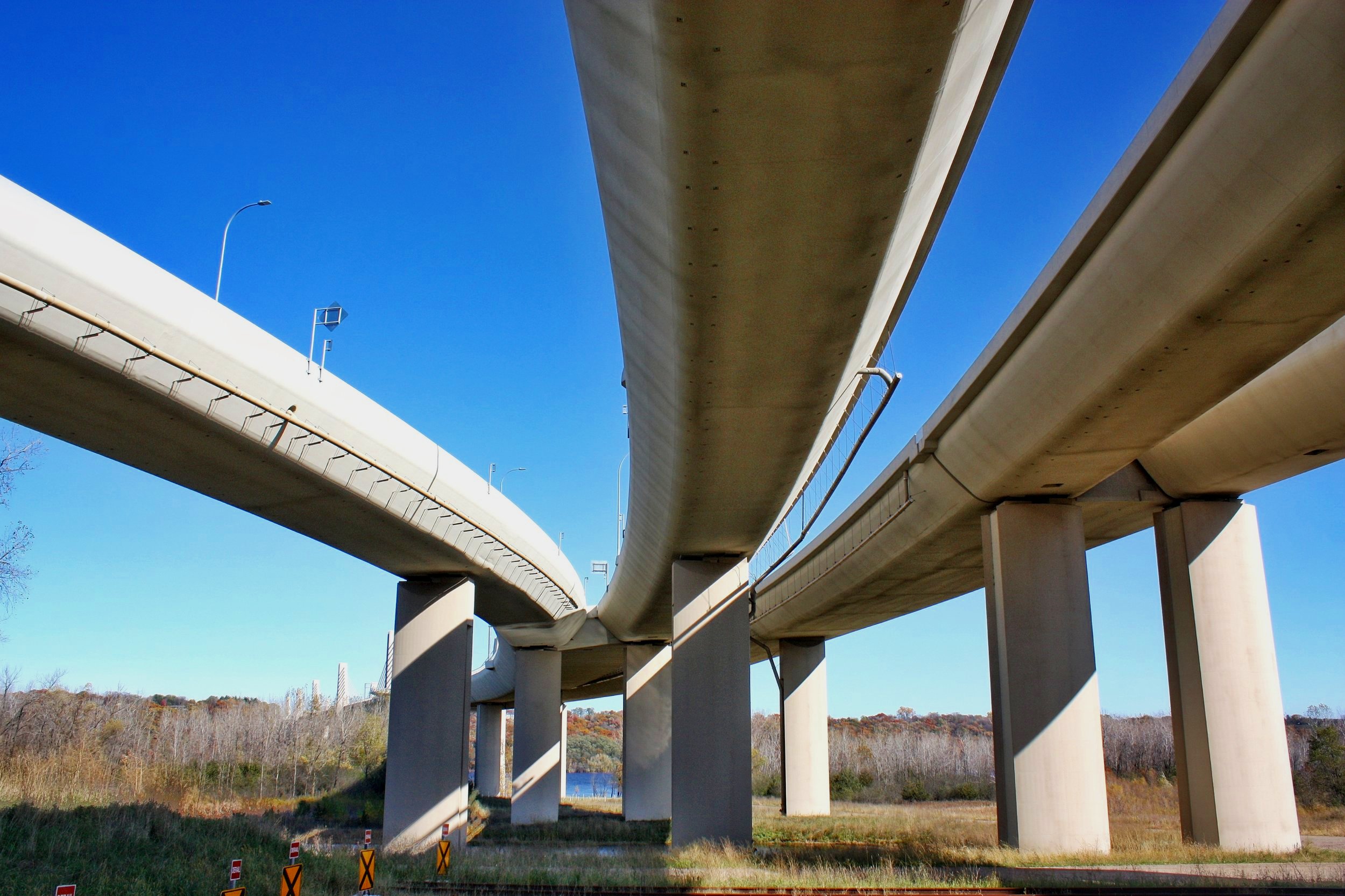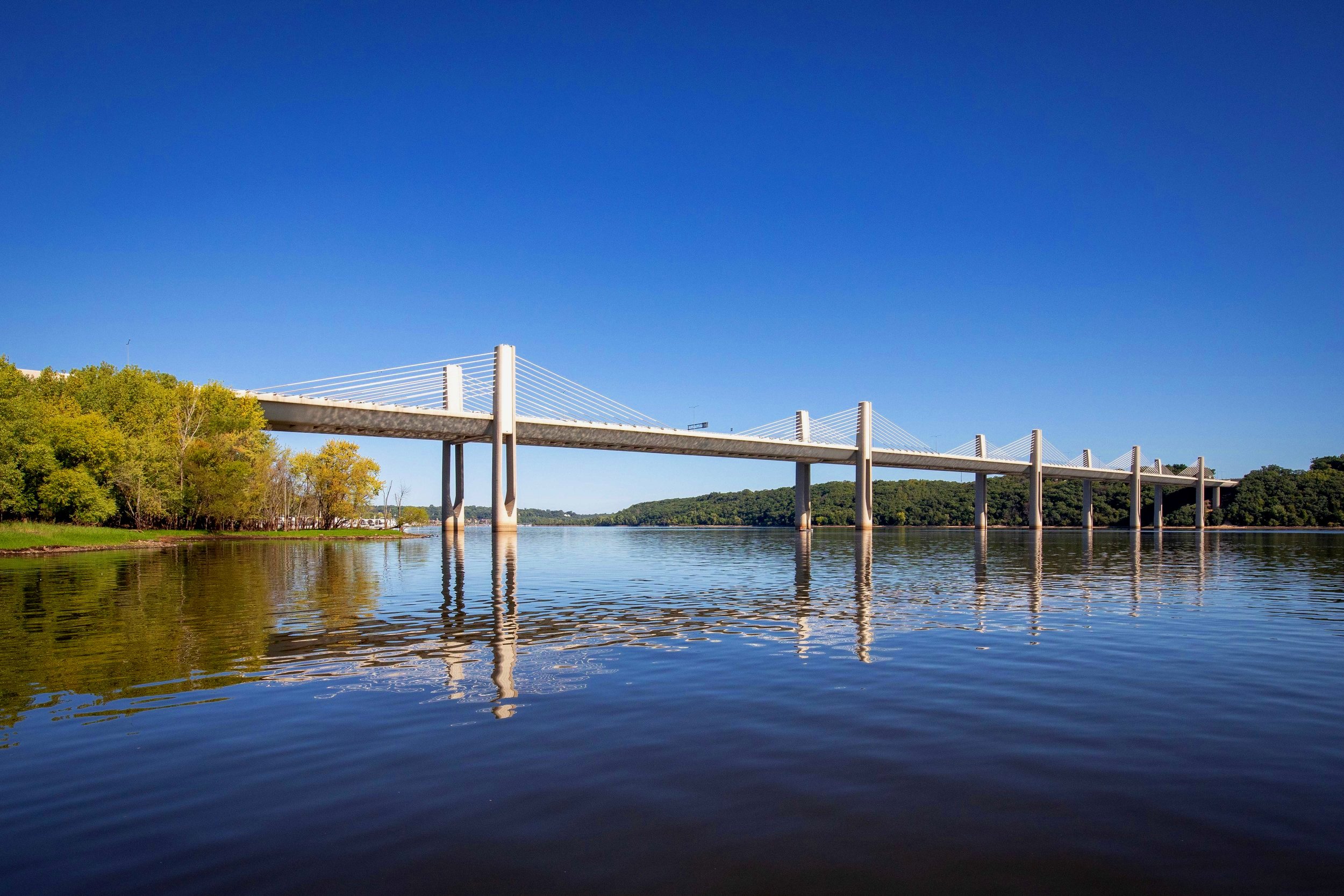
St.Croix River Crossing,
Stillwater, MN - Houghton,WI
The St. Croix River, a National Wild and Scenic River, provides much of the boundary between Minnesota and Wisconsin. A historic two-lane movable bridge between Stillwater, MN and Houghton, WI was one of the few crossings. In the late 1980’s people began to realize that a new bridge was needed in the area. Many concepts were proposed, but none met the environmental protection and community acceptance required for a Wild and Scenic River. Finally, in 2009, a new bridge-building technology produced the current concept. It earned the required approval by the community and the US Congress.
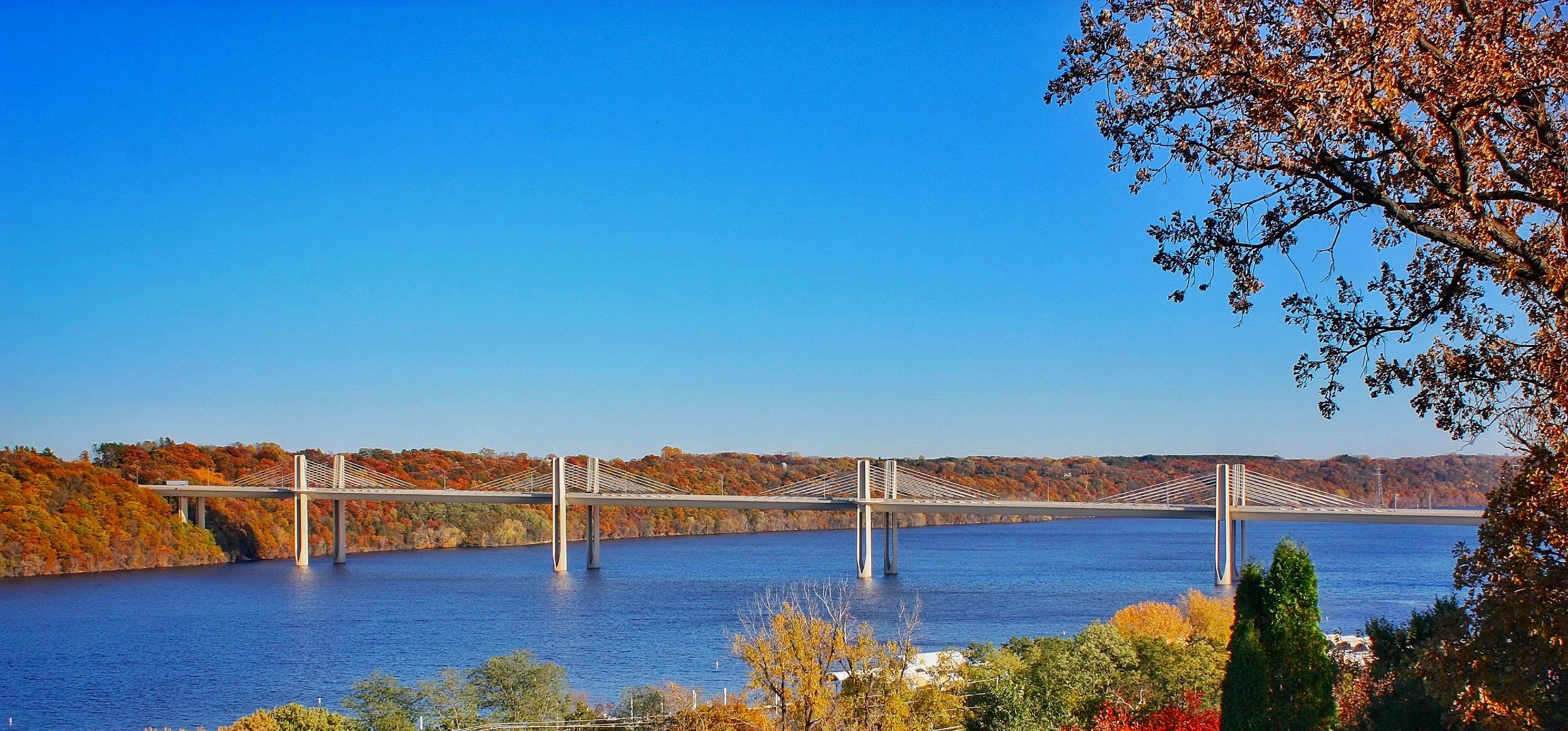
The community was most concerned about the number of piers in the water. Earlier proposals had as many as 11. The towers and cables of the new concept allow 600’ spans, reducing the piers in the river to 5, while the thick girders permit the tower tops to be kept below the horizon. The bridge rests lightly in the landscape. This bridge type, called an ‘extradosed girder’, only became available in the early 21st century.

The rounded forms of the towers and girders derive from the reeds that line the river. The bridge includes a pedestrian/bicycle path with several high overlooks. The path is connected back to the historic bridge between Stillwater and Houghton by new pedestrian/bicycle trails, creating a 4.8 mile loop. It has become widely popular.

The towers split into thin, tapered legs. Their flexibility allows the bridge to react to changes in length caused by seasonal temperature changes. The open vertical slits in the towers and the thin legs minimize the towers’ visual presence. The bridge appears delicate and transparent. The landscape continues through and beyond the bridge.

The railing lets drivers see up and down river and houses the lighting for the pedestrian/bicycle path. The stainless steel covers of the cable anchors and the railing itself glint in the sun, creating a sparkle that brings the bridge to life.

Informational panels at the overlooks inform users about the history and ecology of the St Croix valley.

Roadway lighting reflects off the towers and cable arrays, giving nighttime Wisconsin drivers a monumental entrance to Minnesota.
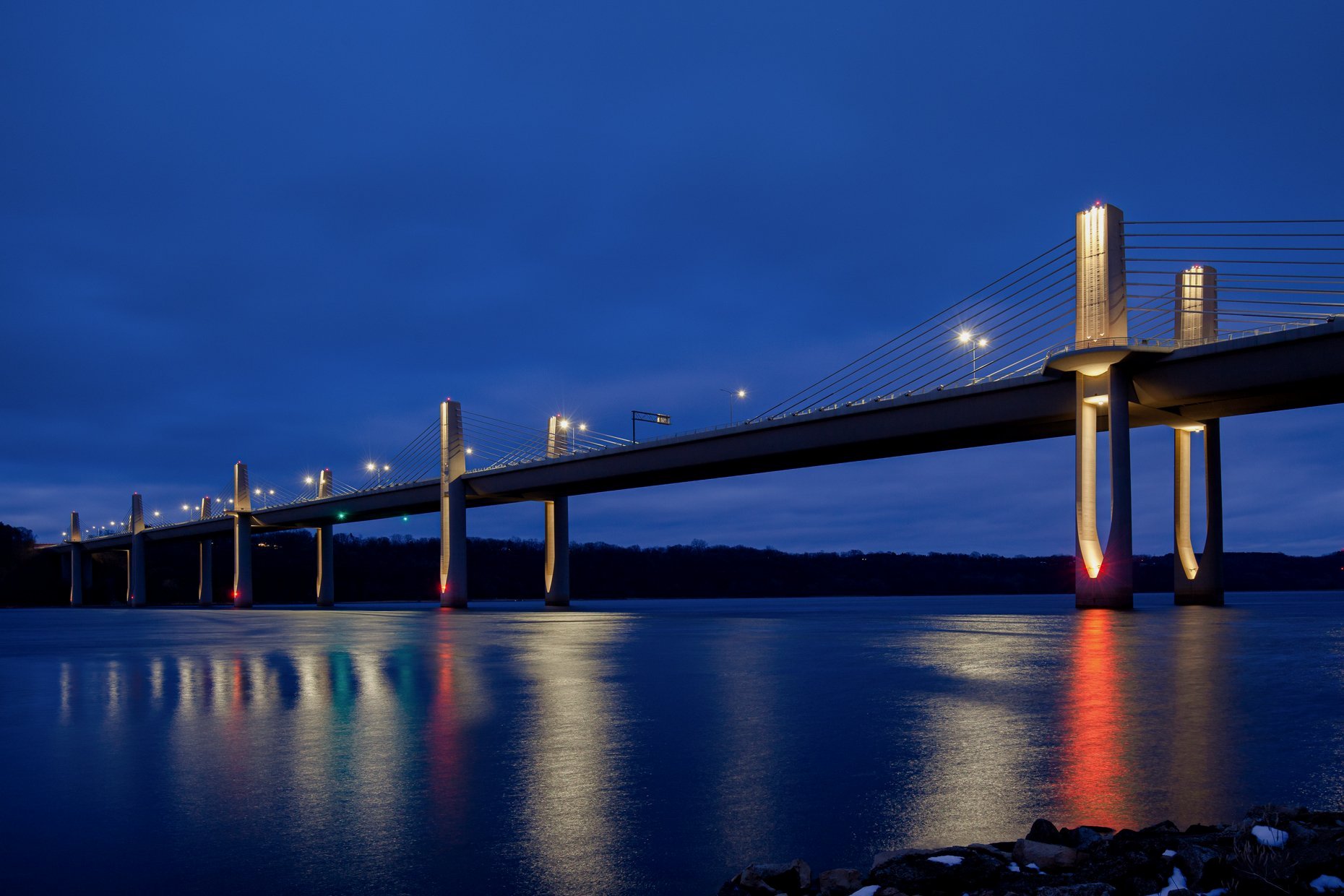
Low-key aesthetic lighting ensures that the bridge is only just visible in the nighttime landscape.
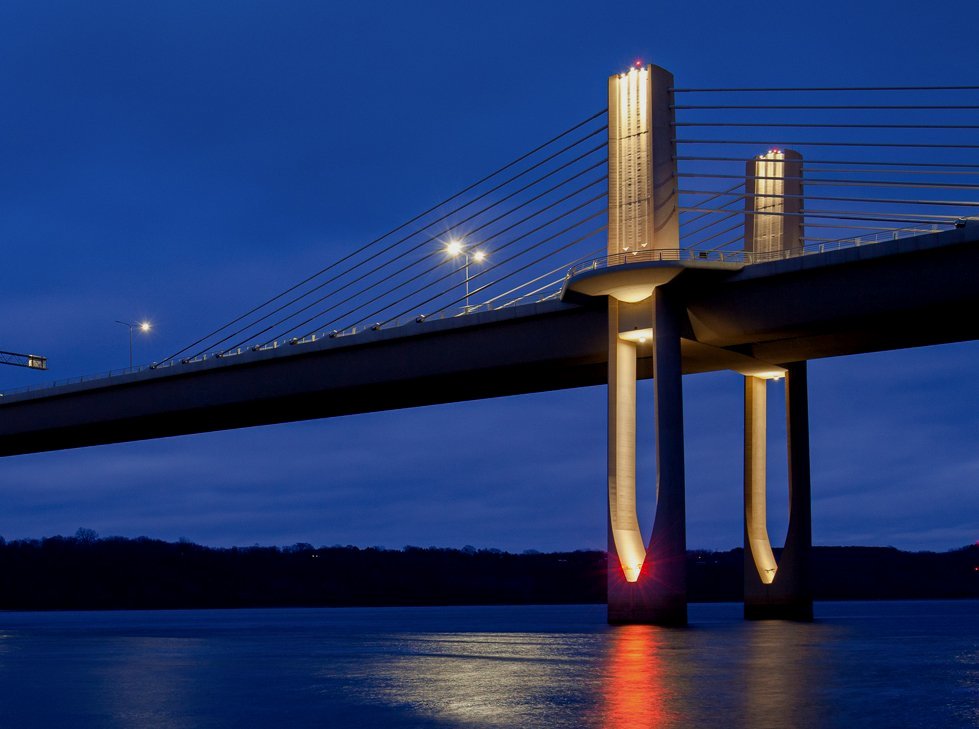
But the tower details are designed to pick up what light there is, so that they remain visible.
